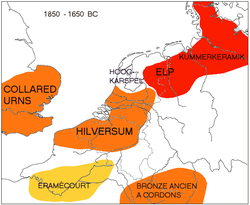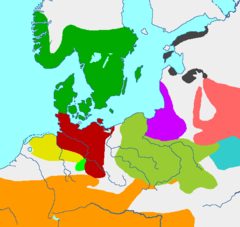Mikewww
Elite member
- Messages
- 200
- Reaction score
- 36
- Points
- 0
- Y-DNA haplogroup
- L705.2/L159.2/Z220
- mtDNA haplogroup
- H*
There are so many scenarios possible according the arrival of R1b in Western Europe;
if we look at the different branches, (from L11 onwards) it looks to me, the center of diversity lies in France. (need more French data...).
Lastly, I was thinking, what if R1b was an Indo-Europeanized marker. A scenario like that might have been the following:
If R1b-M269 was a non-Indo-European marker, and spread first to the Balkan from Anatolia, later on over sea to southern France - R1b's seem good sea men, I think we should not underestimate the faring skills -, where it soon became part of the spread of Bell Beaker.
Then, in southern-Germany, parts of it would have come in touch with the R1a Indo-European elite, and take over their PIE-dialect (Pre-Proto-Italo-Celtic, then happening before anything satem-like), spreading it as R1b folk (Urnfield etc.) over Western Europe (as Proto-Italo-Celtic), not influencing the Basque R1b's.
For a parallel: Romans imposing their language over the Iberian people, who, later, as Spaniards dominate in some American colonies.
Just a thought experiment I think may be worth looking at.
This is a good point to analyze. A good test for it might involve trying to understand the timing and location of the split between pre-Germanic and pre-Italo-Cetic. I think this is quite old so that doesn't support this hypothesis, at least at a point in Bavaria. I would think the split would have occurred closer to the PIE homeland. Any thoughts on that?
Another test for the hypothesis might be R1a in Celtic and Italic lands. You'd think that if R1a transferred PIE to R1b in southern Germany that some Celtic or Italic areas would be strong in R1a. Are there any? or is it completely MIA?
I guess for that matter, is R1a strong in any of the Centum languages? The only one I can think of off the top of my head is way east in China. Tocharian is supposed to be Centum, right, or at least not Satem? Is R1a a little stronger in Turkey?



